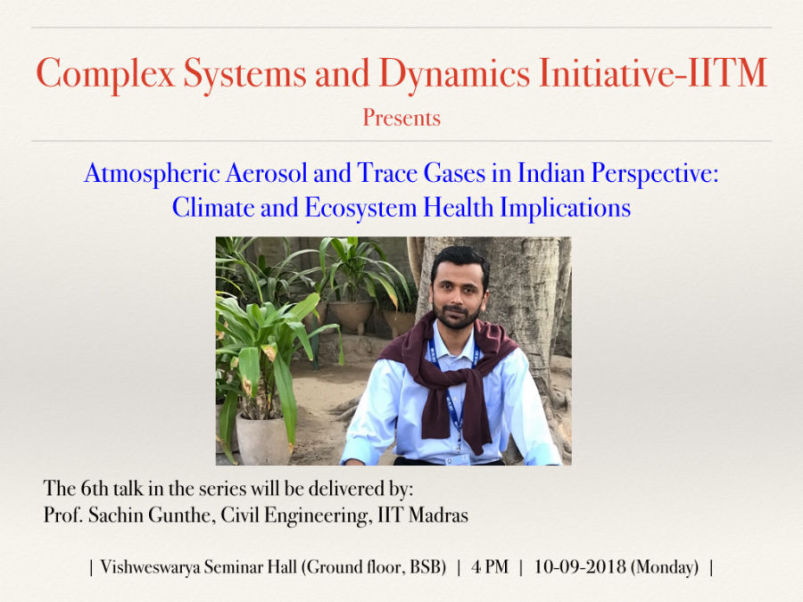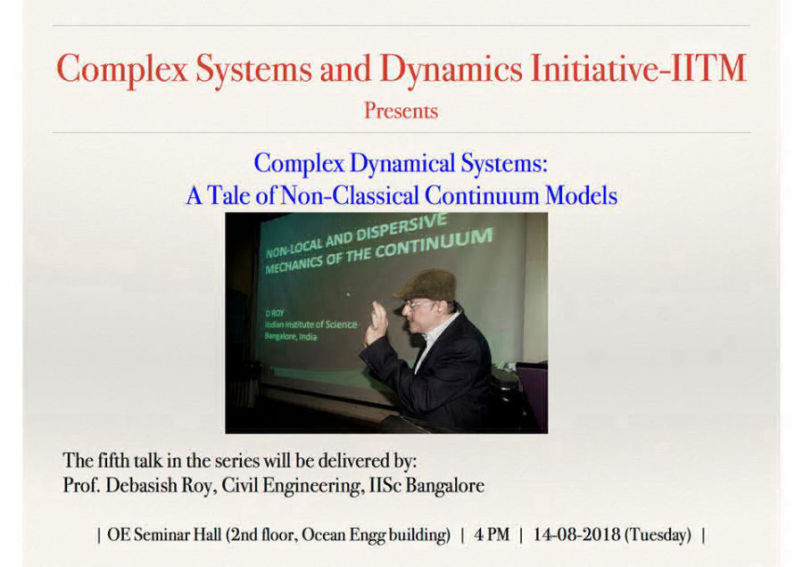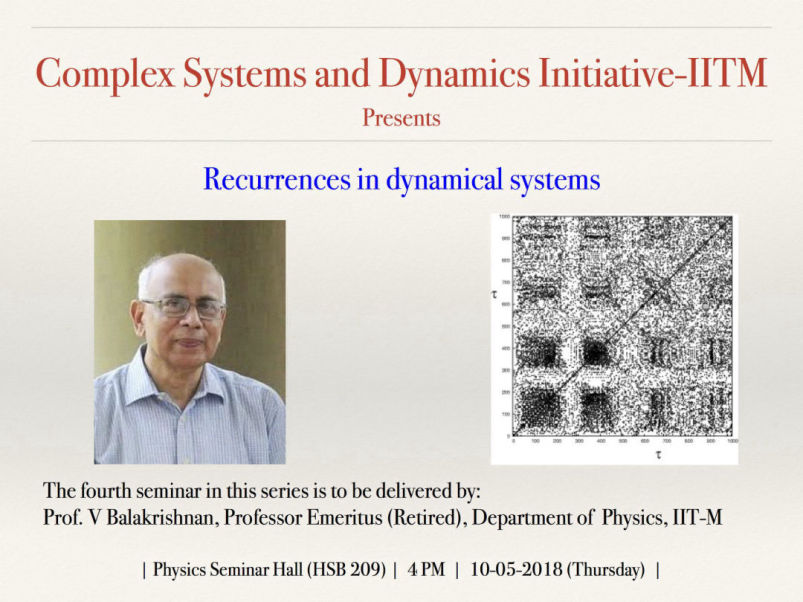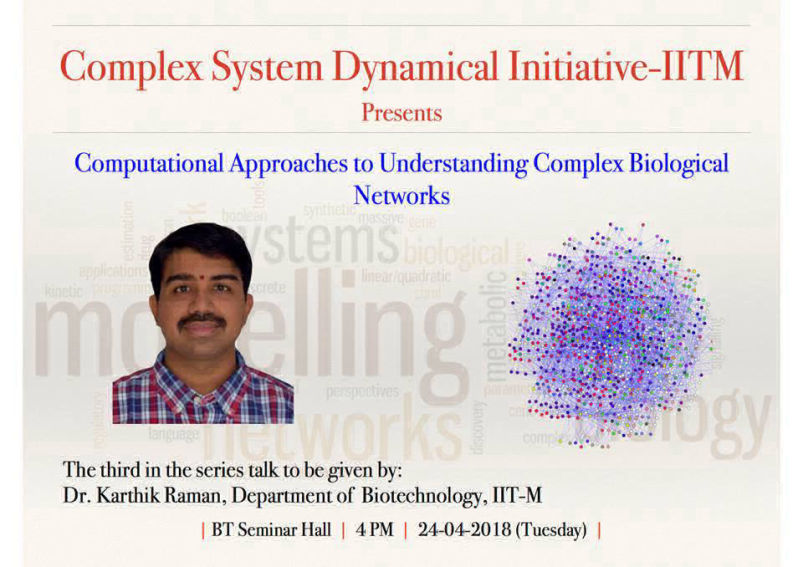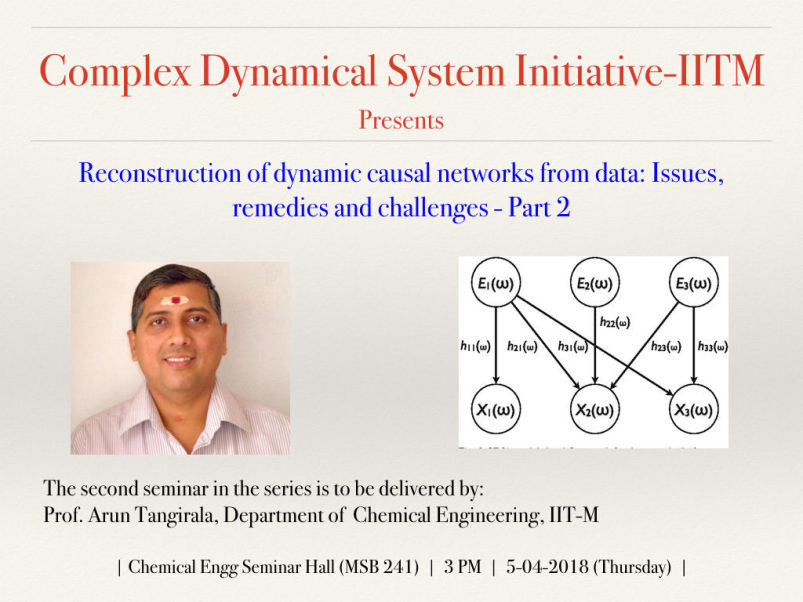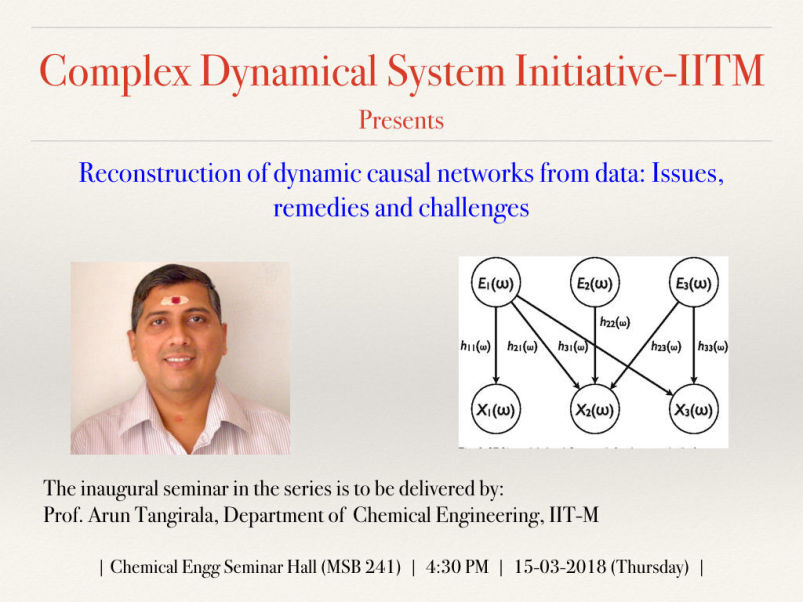Prof Elena Surovyaktina
Potsdam Institute for Climate Impact Research (PIK)Potsdam, Germany
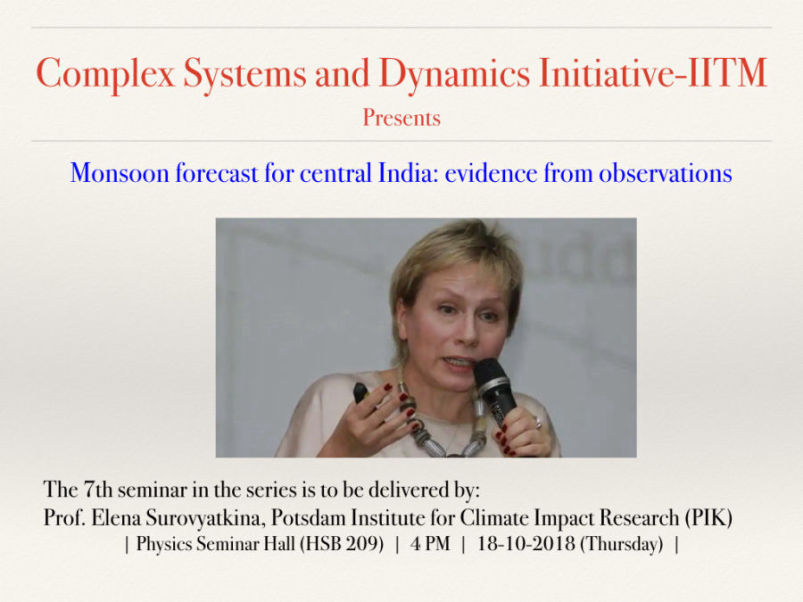
7th Seminar: October 18, 2018
Monsoon forecast for central India: evidence from observations
Abstract
The variability of Indian monsoon implies two aspects wherein firstly, the monsoon season doesn't begin on any fixed date but is only determined by observations and secondly, monsoon begins on different dates in different parts of the country. These features thus make monsoon forecast extremely challenging in India. Additionally, even a two-week delay in monsoon can spell disaster on India's GDP, particularly in a situation where the country's 70% population is directly related to farming - which in turn is dependent on monsoons. Moreover, the forecasting of climate phenomena on a seasonal scale is even more challenging due to the absence of any recent historical precedent for changes in the climate system.
Thus, in order to overcome this challenge, a new methodology for monsoon forecasting is presented. This approach is based on a newly discovered feature of Indian summer monsoon wherein two geographic regions in the areas of the Eastern Ghats (EG) and North Pakistan (NP) act as tipping elements, which play a crucial role in the spatial organization of Monsoon. Observations of the near-surface air temperature and relative humidity in these areas allow forecasting of the monsoon onset and withdrawal dates for 40 and 70 days in advance respectively.
Moreover, the results show that the method used in this study allows predicting the monsoon retrospectively (over the period 1951-2015), as well as for the future. Also, successful predictions for 2016, 2017 and 2018 have validated the accuracy of the study and proved that such early predictions of monsoon timings are possible even under the conditions of climate change. Further, what is important to note is that the forecast of monsoon onset date through this study is the earliest, whereas the withdrawal date is the only one available in India.
